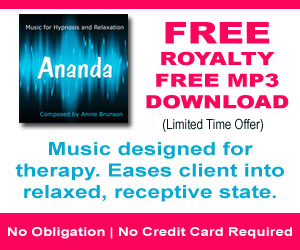 | ||||||
 |
||||||
|
June 4, 2021
Subscribe to this Newsletter | ||||||
|
Distance Learning Course
One of the most controversial uses of hypnosis involves its potential regarding healing the body. This includes assisting the rate of surgical scar repair, controlling skin temperature, influencing blood flow, and improving immune system function. This course will discuss several recent scientific research projects, which have confirmed the role of suggestion and imagination for somatic healing. It will also explain some of the applicable techniques covered in Advanced Neuro-Noetic HypnosisTM training Overall Learning Objectives
Enroll today, start today. This is a self-paced course.
Other Available Courses Include:
Start these courses at any time. Flexible and convenient! By earning the ACCH marks you set yourself apart as a transformational master who is knowledgeable regarding scientifically valid hypnosis, NLP, energy, space/time, and quantum techniques. Our 12-course program is self-paced and can be completed as quickly as four to six months. The skills you will learn will improve your skills for working with individual clients and patients as well as groups and organizations. This is the perfect designation for medical and mental health clinicians, coaches, and consultants.
More News Around the Web
Hypnotherapy: From charlatans and performers to medical care
Hypnotherapy may help with anxiety disorders Who's Who in Mental Health, Medicine, and Coaching  Jim was first introduced to hypnosis in 1965 and began a life long study. While stationed in Okinawa, he learned by combining self-hypnosis with the Martial Arts he was able to achieve much higher goals. In 2000 he became certified as a hypnotist, through the National Guild of Hypnotists, adding complementary medical hypnosis, masters of hypnosis and the 5-path hypnosis methods to his skills.  Lynn Karjala is a licensed psychologist in private practice in Roswell, Georgia, USA. In addition to her general practice, she specializes in the treatment of severe trauma, including Dissociative Identity Disorder and Post-Traumatic Stress Disorder. She is an Approved Consultant for the ACEP Cerfification process and s Seemorg Matrix Work Master Teacher. She is also trained in hypnosis, EFT, TAT, BSFF, and Allergy Antidotes. Before going into clinical practice, she was a tenured child, adolescent and life-span development and psychology of death and dying. Her first book, Understanding Dissociation and the Treatment of Trauma is scheduled for publication in 2006. Her second book, Everyday Trauma, is in process.  Ms. Amos is licensed by the State of Florida as a Mental Health Counselor. She received her certification in Hypnotherapy from the National Guild of Hypnotists and holds a Masters degree in Counselor Education from Florida Atlantic University. Her areas of expertise include; psychotherapy, hypnotherapy, creative art therapies, sex therapy, and aromatherapy. Book Review A Book Review by Tim Brunson, PhD
If a human mind is normal, it is presumed that its owner go through specific physical, cognitive, and emotional stages in order to learn how to navigate their social environment. When that fails to happen as expected by mental health experts, a person could be diagnosed as having some level of Autism Spectrum Disorder (ASD). In Practical Social Skill for Autism Spectrum Disorder: Designing Child-Specific Interventions, Kathleen Koenig MSN presents what she calls a blueprint for understanding ASD and designing effective, evidence-based interventions. more Upcoming Book Reviews
Therapeutic Hypnosis with Children and Adolescents, 2 ed. edited by Laurence I. Sugarman, MD, and William C. Wester, II, Ed.D. Videos of the Week
Hypnotherapy Training Essentials Lesson 3 Eye Fixation
Why repetition creates mastery Double Binds Hypnotherapy Structures The "State" of the Therapist - Lessons from Hypnosis Current Research
Discrete response patterns in the upper range of hypnotic suggestibility: A latent profile analysis.
Hypnosis, hypnotic suggestibility, memory, and involvement in films. Memory formation during anaesthesia: plausibility of a neurophysiological basis. The functional anatomy and connectivity of thought insertion and alien control of movement. Non-pharmacological interventions for chronic pain in people with spinal cord injury. Articles, conference, and training information may be sent to our editor for consideration. Please include your name and email address and send your tip to eNewsletter@hypnosisresearchinstitute.org. A review copy of published books may be mailed to Editor, The International Hypnosis Research Institute, Post Office Box 367, Anniston, AL 36202.E-books, non-published books, and off-topic books will not be reviewed. We favor books which have been published by a recognized publisher and/or have been listed on Amazon. The editors of The International Hypnosis Research Institute hope you enjoyed this newsletter. Please add eNewsletter@hypnosisresearchinstitute.org to your safe list to be sure you don't miss an issue. If you prefer not to receive it in the future, please unsubscribe using the link below. |
| |||||
Copyright © 2026 The International Hypnosis Research Institute, All Rights Reserved.
To unsubscribe from this newsletter, please click here.
Mailing address: The International Hypnosis Research Institute, Post Office Box 367, Anniston, AL 36202 USA


 From the Editor
From the Editor



